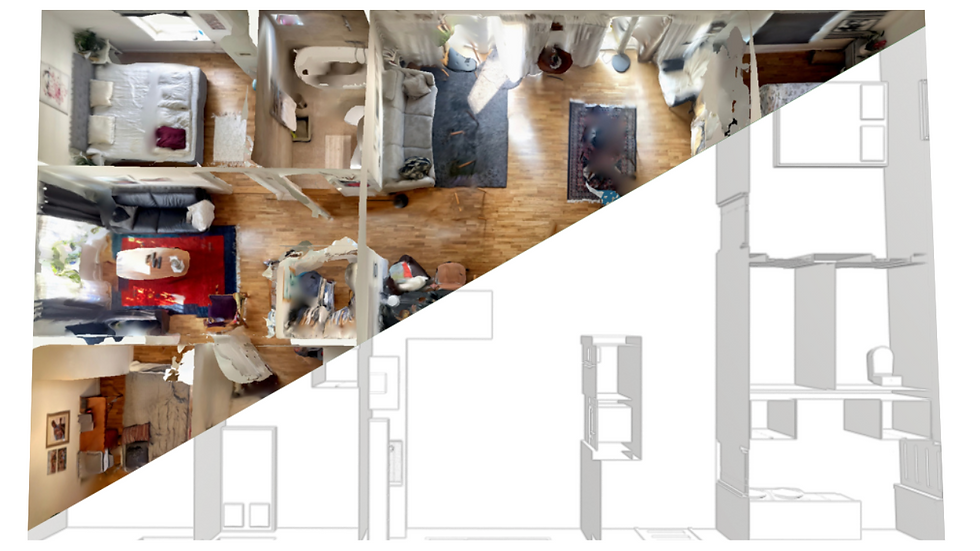The Time for LiDAR, 3D Scanning and Digital Twins is Right Now
- Anders Olofsson
- Mar 10, 2023
- 3 min read
Updated: May 3, 2023
LiDAR Hardware Advancements and Price Drops
LiDAR scanners have become more affordable, making it possible for them to be used in all types of projects and potentially bring about a major impact on transparency, collaboration, and sustainability. In the past, LiDAR and similar technologies were only utilized in large, high-budget projects. While there have been various solutions and companies created in recent years to cater to medium to small buildings and project budgets, there is still a lack of a clear market leader. The current solutions for digitizing buildings are fragmented and often limited to specific industries or target groups, resulting in inefficiencies and unnecessary waste.
Regardless of the precision of the scanner, the technology platform, the technique of the operator, and the conditions on-site, there are still scenarios where scanning and data capturing is difficult and issues arise. Some examples are mirrors and other reflective surfaces which will duplicate and distort data, occlusions often occur in crowded spaces, locked rooms, and other inaccessible areas that can’t be captured. Even if a perfect point cloud is captured, there are still inherent challenges with the technology, including:
Specialized software is required to analyze the captured data.
Large file sizes requiring high processing power.
A point cloud only shows the surface and not what's behind it.
Difficult navigation and viewing of the data.
Difficulty or impossibility to edit and build upon.
Addressing Issues with the Data Capture Process
To overcome these challenges, CAD software is used to draft optimized drawings and models based on the scan files and additional information such as drawings, sketches, photos, and text data. However, this requires flexibility in the intake process which is rare in existing solutions along with professional drafting skills to bridge these gaps that have yet to be automated. The ultimate goal is to create a comprehensive digital twin model that can be used throughout a building’s life cycle for analysis, planning, and development.
Autodesk Revit BIM is a well-known and respected solution for creating CAD models and structuring building data. However, it can be difficult for SMEs and specialized companies to use due to its complexity and high cost. Additionally, there are interoperability issues, even between software within the Autodesk family of CAD tools. Out-of-the-box thinking in the real world can also create problems in Revit, such as using a building component intended for a roof slab as a wall, leading to categorization and visualization conflicts in the software.
Evolving Technology and Opportunities
Recent years have seen significant development in the field of digital twins and web-based 3D, driving a revolution in spatial data visualization and management. We believe in decentralization and tailored solutions that are easy to use, with data structured to fit a company's needs and the ability to expand as its business grows. Companies should also have full ownership of their data and the ability to store it locally, in the cloud, or in future web3 solutions.
Our services focus on developing custom workflows and templates that works right now and are future-proof, delivering downloadable 3D files and structured data that our customers can use efficiently. For instance, our interactive SketchUp 3D models can be integrated into Microsoft Office products such as Excel, Word, and PowerPoint. Additionally, our browser-based models can be integrated into websites and experienced directly in the browser and in VR/AR/XR. Editable models are available for updating and designing upon yourself, or custom CAD drafting services can be provided.
The digitization of properties and related data management is at the brink of transformation with rapidly evolving reality capture solutions and the metaverse/web3. Our services allow you to start digitizing your properties today using low-cost solutions while retaining full ownership of your data and without having to pick a horse amongst the many existing and emerging companies striving to win the race of locking you into recurring billing cycles. It's our belief that property owners should own their models and digital twins without having to pay licensing fees and with full ownership of their data and easy access to it.
Conclusion
Implementation of LiDAR, 3D scanning, and digital twins can bring numerous benefits to various industries including improved collaboration, reduced waste, more informed decisions, increased transparency, and more beautiful buildings. Despite some challenges in the data capture process, advancements in technology and decreasing costs of LiDAR scanners are making it accessible for all project types and sizes. Our services provide an opportunity to start digitizing properties today while retaining full ownership of the data and avoiding licensing fees. Contact us for more information on how we can help you take advantage of these benefits by emailing us at: contact@LiDAR3D.io





Comments